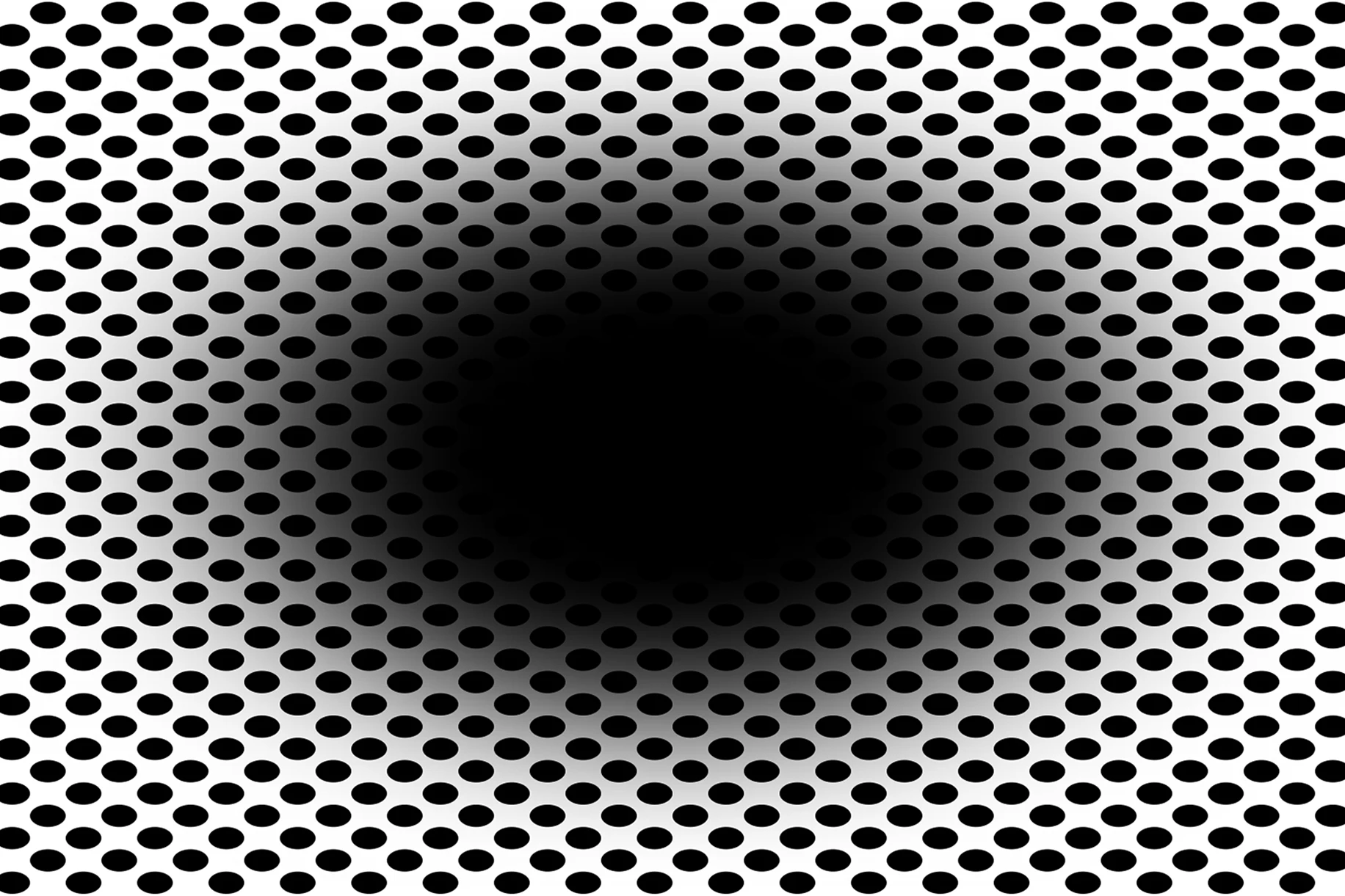When you view the image above, does it look like black smear in the center is expanding? If it does, that means you're like most people – and your brain may even think that you're entering a tunnel, adjusting your eyes accordingly.
As part of a recent study led by the University of Oslo's Prof. Bruno Laeng, a total of 50 adult test subjects with normal vision (31 female, 19 male) were asked to look at the newly developed "expanding hole" optical illusion.
They viewed 26 versions of it, in different smear/dots color combinations. The simple combo shown here – with a black smear and dots on a white background – produced the strongest reaction, with about 86 percent of the participants reporting a perception that the hole was expanding.
What's more, it was found that the greater the reported perception, the more the person's pupils unconsciously dilated as they viewed the illusion. This suggests that their brains were reacting as if the individuals were actually entering a dark tunnel, opening their pupils wider in order to take in more light.
"Here we show based on the new 'expanding hole' illusion that that the pupil reacts to how we perceive light – even if this 'light' is imaginary like in the illusion – and not just to the amount of light energy that actually enters the eye," said Laeng. "The illusion of the expanding hole prompts a corresponding dilation of the pupil, as it would happen if darkness really increased."
It is now hoped that these findings could lead to a better understanding of the ways in which our visual system makes sense of the world around us.
A paper on the research – which also included Prof. Akiyoshi Kitaoka from Japan's Ritsumeikan University, and doctoral student Shoaib Nabil from Britain's University of Sussex – was recently published in the journal Frontiers in Human Neuroscience.
Source: Frontiers




